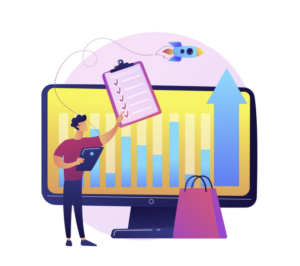Effective Methods for Sales Prediction
Introduction
In today’s dynamic business landscape, the ability to predict sales effectively is crucial for companies aiming to optimize their strategies and stay competitive. This article delves into the realm of sales prediction, exploring proven methods and cutting-edge techniques that empower businesses to forecast their sales with precision.
Understanding Sales Prediction
Sales prediction is the process of using historical data, market trends, and statistical analysis to forecast future sales accurately. It plays a pivotal role in strategic decision-making, resource allocation, and overall business planning. By leveraging advanced tools and methodologies, organizations can gain valuable insights into customer behavior, market demand, and sales performance, enabling them to make informed decisions and drive sustainable growth.
The Importance of Accurate Sales Forecasting
Accurate sales forecasting offers numerous benefits to businesses:
- Optimized Inventory Management: By forecasting sales accurately, businesses can avoid overstocking or understocking, leading to improved inventory management and cost efficiency.
- Resource Allocation: With insights into projected sales, companies can allocate resources such as manpower, marketing budgets, and production capacities more effectively, maximizing ROI.
- Strategic Planning: Sales forecasts serve as a foundation for strategic planning, helping businesses set realistic goals, identify growth opportunities, and mitigate risks.
- Enhanced Customer Experience: Anticipating customer demand enables businesses to meet expectations promptly, enhancing customer satisfaction and loyalty.
Historical Data Analysis for Sales Prediction
One of the fundamental methods for sales prediction is analyzing historical sales data. By examining past sales patterns, seasonal variations, and market trends, businesses can identify recurring patterns and extrapolate future sales trends. Advanced data analytics tools and machine learning algorithms enhance the accuracy of predictions by uncovering hidden correlations and predictive indicators within the data.
Also Read: Analyzing Market Research Data: A Comprehensive Guide
Market Segmentation and Customer Analysis
Segmenting the market and analyzing customer behavior are integral to effective sales prediction. By categorizing customers based on demographics, psychographics, purchasing habits, and preferences, businesses can tailor their sales strategies and offerings to different segments. Customer analysis also involves studying customer lifetime value, churn rates, and buying cycles to anticipate future sales opportunities and challenges.
Advanced Forecasting Techniques
In addition to traditional methods, advanced forecasting techniques such as predictive modeling, time series analysis, and machine learning algorithms are revolutionizing sales prediction. Predictive modeling leverages historical data and statistical algorithms to generate predictive models that forecast future sales with high accuracy. Time series analysis focuses on identifying patterns and trends in sequential data, making it valuable for forecasting sales over time. Machine learning algorithms, including neural networks and decision trees, can process vast datasets and generate real-time predictions, enabling businesses to adapt quickly to market changes.
Leveraging Technology for Sales Prediction
The advent of technology has empowered businesses with powerful sales prediction tools and platforms. Customer relationship management (CRM) software, predictive analytics software, and AI-driven sales forecasting platforms enable businesses to automate data analysis, gain actionable insights, and make data-driven decisions. These technologies not only streamline the sales prediction process but also enhance the accuracy and reliability of forecasts.
Effective Methods for Sales Prediction: FAQs
How can businesses improve the accuracy of their sales forecasts?
Businesses can improve sales forecast accuracy by incorporating multiple data sources, leveraging advanced analytics tools, validating models regularly, and incorporating qualitative insights from sales teams and industry experts.
What role does machine learning play in sales prediction?
Machine learning plays a crucial role in sales prediction by analyzing large volumes of data, identifying patterns, and generating predictive models that adapt to changing market dynamics, leading to more accurate forecasts.
Are there industry-specific challenges in sales prediction?
Yes, different industries face unique challenges in sales prediction, such as seasonality in retail, long sales cycles in B2B industries, and rapid market changes in technology sectors. Tailoring forecasting models to address these challenges is essential for accuracy.
How can startups benefit from effective sales prediction methods?
Startups can benefit from effective sales prediction methods by gaining insights into market demand, optimizing resource allocation, identifying growth opportunities, and making data-driven decisions that fuel sustainable growth and scalability.
What are the risks of inaccurate sales forecasts?
Inaccurate sales forecasts can lead to overstocking or understocking, missed revenue targets, poor resource allocation, inventory management challenges, and diminished customer satisfaction due to unmet demand or supply shortages.
How can businesses integrate sales prediction into their overall strategy?
Businesses can integrate sales prediction into their overall strategy by aligning sales forecasts with business objectives, conducting scenario analysis, iterating on forecasting models based on performance feedback, and fostering a data-driven culture across the organization.
Conclusion
Effective sales prediction is a cornerstone of successful business operations, enabling organizations to anticipate market trends, optimize resources, and drive sustainable growth. By leveraging historical data analysis, advanced forecasting techniques, technology solutions, and industry-specific insights, businesses can enhance their sales prediction capabilities and stay ahead in today’s competitive landscape.


Comments
Post a Comment